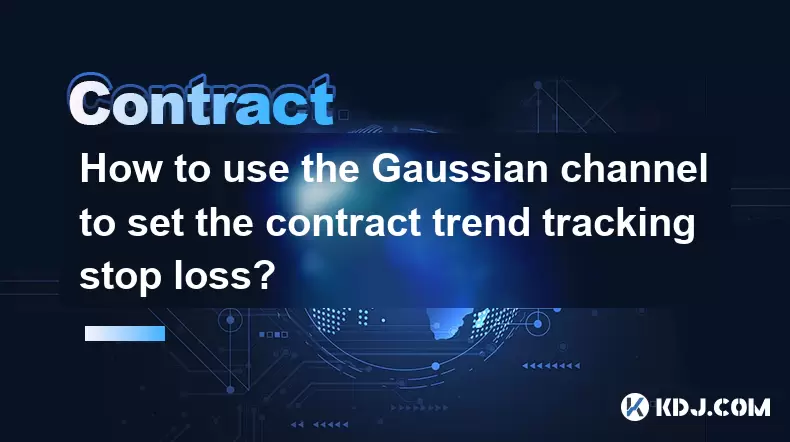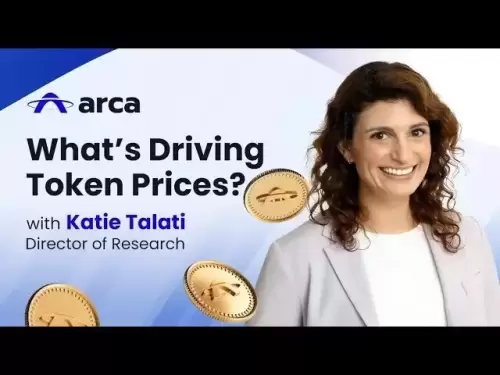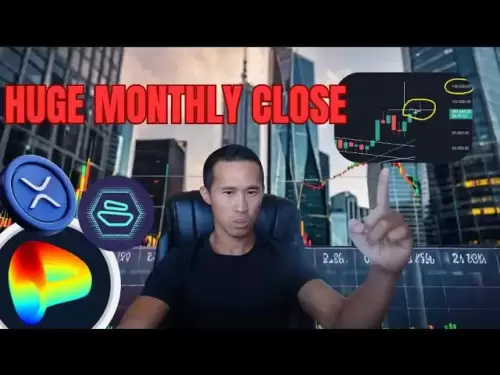-
 Bitcoin
Bitcoin $107,443.3008
-1.17% -
 Ethereum
Ethereum $2,494.2503
-0.63% -
 Tether USDt
Tether USDt $1.0003
0.00% -
 XRP
XRP $2.2496
2.23% -
 BNB
BNB $658.7569
0.63% -
 Solana
Solana $154.9826
1.94% -
 USDC
USDC $1.0000
0.01% -
 TRON
TRON $0.2799
1.07% -
 Dogecoin
Dogecoin $0.1659
-1.78% -
 Cardano
Cardano $0.5745
0.25% -
 Hyperliquid
Hyperliquid $39.7005
0.13% -
 Bitcoin Cash
Bitcoin Cash $519.5989
3.78% -
 Sui
Sui $2.7874
-2.40% -
 Chainlink
Chainlink $13.3762
-1.69% -
 UNUS SED LEO
UNUS SED LEO $9.0784
-0.64% -
 Avalanche
Avalanche $17.9846
-2.81% -
 Stellar
Stellar $0.2390
-0.06% -
 Toncoin
Toncoin $2.9028
0.25% -
 Shiba Inu
Shiba Inu $0.0...01147
-2.17% -
 Litecoin
Litecoin $86.6956
-1.27% -
 Hedera
Hedera $0.1508
-0.50% -
 Monero
Monero $322.6222
3.26% -
 Polkadot
Polkadot $3.4124
-2.99% -
 Dai
Dai $0.9999
0.00% -
 Bitget Token
Bitget Token $4.5434
-1.97% -
 Ethena USDe
Ethena USDe $1.0002
0.00% -
 Uniswap
Uniswap $7.1562
-2.61% -
 Aave
Aave $275.8830
-1.02% -
 Pepe
Pepe $0.0...09790
-4.04% -
 Pi
Pi $0.5018
-5.09%
BitMEX leverage tutorial
Leverage is an effective tool for amplifying trading gains and losses, but it's essential to understand the risks and precautions involved, such as liquidation and emotional decision-making, before using it on BitMEX.
Nov 09, 2024 at 04:30 pm

BitMEX Leverage Tutorial: A Comprehensive Guide to Trading with Leverage
1. Understanding Leverage: What Is It and How Does It Work?
Leverage is a financial tool that allows traders to amplify their positions by borrowing funds from a broker. This effectively magnifies both the potential gains and losses of a trade.
- Example: If you have $1,000 in your trading account and use 10x leverage, you can trade with $10,000 worth of capital. This means your potential gains and losses are both multiplied by 10.
2. How Leverage Is Applied on BitMEX
On BitMEX, leverage is applied to the underlying contract value rather than the absolute position size. The contract value is the notional value of the contract, determined by multiplying the contract size by the price.
- Example: Let's say you want to buy 1 contract of BTCUSD perpetual futures with a contract size of 0.001 BTC. At a price of $40,000, the contract value is $40. If you use 10x leverage, you would borrow $360 (90% of $400) from BitMEX. You would then have a total position size of $400 (10% of $400).
3. Calculating Profit and Loss with Leverage
When trading with leverage, it's crucial to understand how profit and loss (PnL) is calculated. PnL is determined by the change in the underlying asset's price multiplied by the leverage applied and the position size.
- Example: If you open a long position of $10,000 with 10x leverage and BTCUSD increases by 10%, your PnL would be $1,000 ($10,000 x 0.10).
4. Risks Associated with Trading with Leverage
Leverage can greatly enhance trading returns, but it also amplifies losses. The following risks should be considered:
- Liquidation: If the market moves against your position and your account equity falls below a certain threshold, your position may be liquidated.
- Increased Volatility: Leverage magnifies both gains and losses, resulting in increased volatility and potential for large swings.
- Emotional Trading: Leverage can lead to emotional decision-making as traders chase profits or try to recover losses quickly.
5. Precautions Before Trading with Leverage on BitMEX
To mitigate the risks associated with leverage, consider the following precautions:
- Start Small: Begin with a small amount of leverage (e.g., 2-5x) until you become familiar with its effects.
- Manage Risk: Use proper risk management techniques such as stop-loss orders, position sizing, and limiting leverage.
- Understand Liquidation: Familiarize yourself with BitMEX's liquidation policy and the factors that can trigger it.
- Practice Discipline: Stick to your trading plan and avoid impulsive decisions.
- Consider Trading Bots: Use automated trading bots to execute trades with pre-defined parameters and minimize subjective decision-making.
6. Choosing the Right Leverage Setting for Your Strategy
The optimal leverage setting depends on your trading strategy, risk tolerance, and market conditions:
- Scalpers: Scalpers who frequently enter and exit trades with small gains generally use higher leverage (e.g., 5-10x).
- Day Traders: Day traders who hold positions for a day or less may use moderate leverage (e.g., 2-5x) to balance risk and reward.
- Swing Traders: Swing traders who hold positions for days or weeks typically use lower leverage (e.g., 1-2x) to manage risk.
- Long-Term Investors: Long-term investors who hold positions for months or years may not use leverage at all.
7. Alternative Trading Options on BitMEX
Aside from using leverage, BitMEX offers other trading options:
- Non-Leveraged Trading: Open long or short positions without leverage, providing lower risk and a more traditional trading experience.
- Cross Margin: Use your entire account balance as collateral for multiple positions, allowing for higher potential returns but also increased risk.
- Isolated Margin: Allocate a specific amount of funds to each position, restricting risk to the allocated funds only.
Disclaimer:info@kdj.com
The information provided is not trading advice. kdj.com does not assume any responsibility for any investments made based on the information provided in this article. Cryptocurrencies are highly volatile and it is highly recommended that you invest with caution after thorough research!
If you believe that the content used on this website infringes your copyright, please contact us immediately (info@kdj.com) and we will delete it promptly.
- North Korea's Cyber Plot: Funding Weapons Development Through Virtual Heists
- 2025-07-01 10:30:12
- Undervalued Crypto Tokens: Compute Tokens Stealing the Show?
- 2025-07-01 10:50:12
- XRPL EVM Sidechain: Unleashing Smart Contracts and Cross-Chain DeFi on XRP
- 2025-07-01 10:30:12
- Archaeology Unearths Ancient Coin Moulds: A Glimpse into Indo-Greek Trade in Gujarat
- 2025-07-01 10:50:12
- MAGACOIN FINANCE: Altcoin Returns & the Early Adoption Advantage
- 2025-07-01 11:10:12
- Neo Pepe: Is This Presale the Crypto Opportunity You've Been Waiting For?
- 2025-07-01 11:10:12
Related knowledge

How to use the price slope to filter the false breakthrough signal of the contract?
Jun 20,2025 at 06:56pm
Understanding the Concept of Price Slope in Contract TradingIn contract trading, especially within cryptocurrency derivatives markets, price slope refers to the rate at which the price changes over a specific time period. It helps traders assess the strength and sustainability of a trend. A steep slope may indicate strong momentum, while a shallow slope...

How to determine the expected volatility of the contract through the volatility cone?
Jun 19,2025 at 12:28pm
Understanding the Basics of Volatility in Cryptocurrency ContractsIn the realm of cryptocurrency trading, volatility is a key metric that traders use to assess potential risk and reward. When dealing with futures contracts, understanding how volatile an asset might become over time is crucial for position sizing, risk management, and strategy developmen...

How to formulate a contract intraday trading plan in combination with the pivot point system?
Jun 21,2025 at 03:42pm
Understanding the Basics of Pivot Points in Cryptocurrency TradingPivot points are technical analysis tools used by traders to identify potential support and resistance levels. These levels are calculated using the previous day's high, low, and closing prices. In the context of cryptocurrency trading, where markets operate 24/7, pivot points help trader...

How to adjust the contract position ratio through the price fluctuation entropy?
Jun 22,2025 at 11:42am
Understanding Price Fluctuation Entropy in Cryptocurrency ContractsIn the world of cryptocurrency futures trading, price fluctuation entropy is a relatively new concept used to measure market volatility and uncertainty. It derives from information theory, where entropy refers to the degree of randomness or unpredictability in a system. In crypto contrac...

How to use the volume swing indicator to predict the contract volume-price divergence?
Jun 18,2025 at 11:42pm
Understanding the Volume Swing IndicatorThe volume swing indicator is a technical analysis tool used primarily in cryptocurrency trading to evaluate changes in volume over time. Unlike price-based indicators, this metric focuses solely on trading volume, which can provide early signals about potential market reversals or continuations. The key idea behi...

How to use the Gaussian channel to set the contract trend tracking stop loss?
Jun 18,2025 at 09:21pm
Understanding the Gaussian Channel in Cryptocurrency TradingThe Gaussian channel is a technical indicator used primarily in financial markets, including cryptocurrency trading, to identify trends and potential reversal points. It is based on statistical principles derived from the normal distribution, commonly known as the Gaussian distribution or bell ...

How to use the price slope to filter the false breakthrough signal of the contract?
Jun 20,2025 at 06:56pm
Understanding the Concept of Price Slope in Contract TradingIn contract trading, especially within cryptocurrency derivatives markets, price slope refers to the rate at which the price changes over a specific time period. It helps traders assess the strength and sustainability of a trend. A steep slope may indicate strong momentum, while a shallow slope...

How to determine the expected volatility of the contract through the volatility cone?
Jun 19,2025 at 12:28pm
Understanding the Basics of Volatility in Cryptocurrency ContractsIn the realm of cryptocurrency trading, volatility is a key metric that traders use to assess potential risk and reward. When dealing with futures contracts, understanding how volatile an asset might become over time is crucial for position sizing, risk management, and strategy developmen...

How to formulate a contract intraday trading plan in combination with the pivot point system?
Jun 21,2025 at 03:42pm
Understanding the Basics of Pivot Points in Cryptocurrency TradingPivot points are technical analysis tools used by traders to identify potential support and resistance levels. These levels are calculated using the previous day's high, low, and closing prices. In the context of cryptocurrency trading, where markets operate 24/7, pivot points help trader...

How to adjust the contract position ratio through the price fluctuation entropy?
Jun 22,2025 at 11:42am
Understanding Price Fluctuation Entropy in Cryptocurrency ContractsIn the world of cryptocurrency futures trading, price fluctuation entropy is a relatively new concept used to measure market volatility and uncertainty. It derives from information theory, where entropy refers to the degree of randomness or unpredictability in a system. In crypto contrac...

How to use the volume swing indicator to predict the contract volume-price divergence?
Jun 18,2025 at 11:42pm
Understanding the Volume Swing IndicatorThe volume swing indicator is a technical analysis tool used primarily in cryptocurrency trading to evaluate changes in volume over time. Unlike price-based indicators, this metric focuses solely on trading volume, which can provide early signals about potential market reversals or continuations. The key idea behi...

How to use the Gaussian channel to set the contract trend tracking stop loss?
Jun 18,2025 at 09:21pm
Understanding the Gaussian Channel in Cryptocurrency TradingThe Gaussian channel is a technical indicator used primarily in financial markets, including cryptocurrency trading, to identify trends and potential reversal points. It is based on statistical principles derived from the normal distribution, commonly known as the Gaussian distribution or bell ...
See all articles

























































































